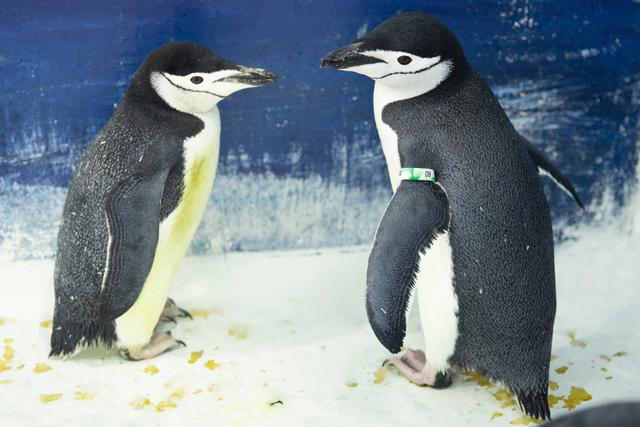Pygoscelis antarcticus
IUCN
LCBasic Information
Scientific classification
- name:Pygoscelis antarcticus
- Scientific Name:chinstrap penguin, Police officer penguin, Antarctic penguin, chinstrap penguin, whiskered penguin, chinstrap penguin
- Outline:Waterfowl
- Family:Sphenisciformes Spheniscidae Pygoscelis
Vital signs
- length:71 ~76 cm
- Weight:3~ 4.5kg
- lifetime:About 15~20 years
Feature
There is a black stripe under the neck, like a naval officer's hat band, which makes it look majestic and resolute. The Soviets called it the "Police Officer Penguin".
Distribution and Habitat
Chinstrap penguins live mainly on the Antarctic Peninsula and on islands on the edge of the Antarctic continent, such as the South Shetland Islands, South Orkney Islands and the South Sandwich Islands.
Chinstrap penguins live in Antarctica, in the South Atlantic Ocean, and a small number live in southern New Zealand. They often live on large ice floes in the open ocean. They do not spend much time in coastal areas of the continent. They migrate short distances to nearby islands for breeding (they are not considered migratory species).
Appearance
The chinstrap penguin is 72 cm long and weighs about 4 kg on average. There is a black stripe under its head, which makes it look like it is wearing a helmet, so it is also called chinstrap penguin or chinstrap penguin. It looks similar to the Adélie penguin of the same genus, with white eye circles, blue-green head, black beak, thin feathers at the corners of the beak, short legs and black claws. The feathers are composed of black and white. Their head, back, tail, back of the wings and lower jaw are black, and the rest are white. The Adélie penguin is very imaginative, the only difference is that it has a thin black strip around the lower jaw. The body is streamlined, with black feathers on the back and white feathers on the abdomen. The wings are degenerate and fin-shaped. The feathers are tubular structures and arranged in a lanceolate shape. The feet are thin and the legs are short. There are webbed feet between the toes. The tail is short, the body is fat, the belly is big, and i
Details
As penguins that look like police officers, they are also very courageous and are likely to conflict with other penguins, or even fight with them.

The breeding colony of chinstrap penguins is huge, usually consisting of more than 100,000 breeding pairs of penguins. Their communication is very complex. They communicate through behaviors such as waving their heads and flippers, calling each other, bowing, gesturing, and preening their feathers.
When chinstrap penguins compete for territory, they stare at each other, call, and even fight.
During courtship and mating rituals, male chinstrap penguins "beat their chests" and stretch their necks; then they make sharp calls, and the rest of the penguins join in, singing a massive courtship song; this helps chinstrap penguins breed collectively.
Chinstrap penguins can swim at speeds of up to 32 kilometers per hour. Like other penguins, chinstrap penguins lie prone directly on the ice and use their limbs to propel their bodies.
Chinstrap penguins can forage at sea during the day and at night, but they mainly dive into the sea to hunt at midnight and noon. They usually hunt in waters 40 meters deep, and their diving depth usually does not exceed 70 meters, and the time does not exceed 1 minute.
Their main natural enemy is leopard seals, while Antarctic seabirds and skuas mainly prey on their eggs and chicks.
It is listed as Least Concern in the Red List of the World Conservation Union (IUCN).








